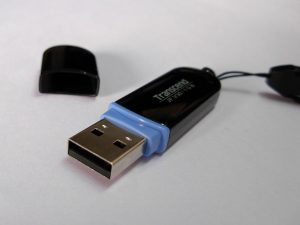Method 3: Format USB drive to NTFS in Windows 10/8/7 with disk management tool.
Step 1: Right-click “My Computer” and select “Manage”.
Step 2: Open the “Device Manager “and find your USB drive under the Disk Drives heading.
Step 3: Right-click the drive and select “Properties”.
How do I format a USB drive?
Formatting a USB Flash Drive to NTFS file system
- Right click My Computer and select Manage.
- Open the Device Manager and find your USB drive under the Disk Drives heading.
- Right click the drive and select Properties.
- Choose Policies tab and select the “Optimize for performance” option.
- Click OK.
- Open My Computer.
- Select Format on the flash drive.
How do I wipe a USB on Windows 10?
How to Delete a Partition on a USB Drive in Windows 10?
- Press Windows + R simultaneously, type cmd, click “OK” to open an elevated command prompt.
- Type diskpart and hit enter.
- Type list disk.
- Type select disk G and hit enter.
- If there are one more partitions on the flash drive and you wish to delete some of them, now type list partition and hit enter.
Can I format a USB drive to NTFS?
If you have ever tried to format a USB thumb drive or memory stick, you may have noticed that the only file system options you have are FAT and FAT32. However, with some slight tweaking of settings, you can actually format your removable storage devices in NTFS format, including external hard drives, etc.
Do I need to format a new USB stick?
In some instances, formatting is necessary to add new, updated software to your flash drive. However, this system isn’t always optimal for USB flash drives unless you need to transfer extra large files; you’ll see it pop up more frequently with hard drives.
What format does Windows 10 USB drive need to be in?
Windows 10 offers three file system options when formatting a USB drive: FAT32, NTFS and exFAT. Here is the breakdown of the pros and cons of each filesystem. * Removable storage devices such as USB Flash Drives. * Devices that need to be plugged into a variety of operating systems.
Why can’t I format my USB?
Damaged flash drives can be formatted within Disk Management. If USB drive uses unrecognized file system format or becomes unallocated or uninitialized, it will not show in My Computer or Windows Explorer. Right click on My Computer and select item “Manage”, and then click Disk Management on the left side.
How do you reset a USB drive?
You might overwrite any hard disk on the computer.
- Make sure that the USB stick that you want to reset is unplugged.
- Start Disk Utility.
- Plug the USB stick that you want to reset.
- In the list of storage devices, verify that the device corresponds to the USB stick that you want to reset, its brand, its size, etc.
How do I delete a partition on my USB drive Windows 10?
Step 1: Open Disk Management by right-clicking Start menu and choosing Disk Management.
- Step 2: Locate the USB drive and the partition to be deleted.
- Step 4: Type delete volume and press Enter.
- Step 2: Select the partition to be deleted in the software and click the Delete button from toolbar.
How do I physically clean a flash drive?
Wet a cotton swab with isopropyl alcohol and insert it into a USB port to clean out stubborn dust and sticky messes. Wipe all around the inside of the port, including on the contacts.
What is the best format for a flash drive?
So it can be say that NTFS is best format for USB 3.0 flash drive for windows. exFAT is good for flash drives, it doesn’t support journaling so there’s less to write.
What happens when you format a flash drive?
What Happens When You Format a Memory Stick? The act of formatting a memory stick removes all data being stored on the stick. Formatting the drive permanently erases all data from the drive and restores it to the way it was when you took it out of the packaging.
What is exFAT format?
exFAT (Extended File Allocation Table) is a file system introduced by Microsoft in 2006 and optimized for flash memory such as USB flash drives and SD cards.
Photo in the article by “Flickr” https://www.flickr.com/photos/ambuj/345356294

